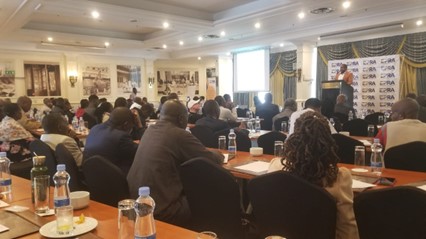
- Date
- 29th November 2023
- Categories
- Electric Cooking, Scaling eCooking
By Dr Jon Leary, Syprose Ochieng, and Beryl Onjala (Gamos East Africa).
In this second part of the blog series on the new KPLC tariff structure, we highlight the outcomes resulting from the collaborative engagements between eCooking sector stakeholders and the Energy and Petroleum Regulatory Authority (EPRA) in the tariff review process. The dedication demonstrated by both the regulatory authority and Kenya Power and Lighting Company (KPLC) has played a pivotal role in creating a supportive environment for the growth of the eCooking sector in Kenya.
The first blog in this series detailed the compelling case put forward by the eCooking Community of Practice, emphasizing the value of electric cooking for consumers and utilities. This triggered a robust debate between the EPRA and KPLC teams, ultimately leading to a significant development for the eCooking sector. As a direct outcome of the discussions with the MECS team, EPRA announced through a press release a new customer band for those consuming 30 to 100 kWh/month. Although not referred to as an ‘eCooking tariff’ as such, it was specifically introduced to promote the uptake of eCooking, as it targets the typical consumption range for low-income households who may consider cooking with electricity. This new tariff band encourages demand growth by offering a stepping stone for households on the lifeline tariff to start consuming more without the fear of their bill suddenly spiralling out of control as the unit cost is set halfway between the lifeline and regular tariff. Effective April 1st, 2023, this discounted tariff band is now accessible to all of KPLC’s 8 million+ domestic customers falling within this consumption range.
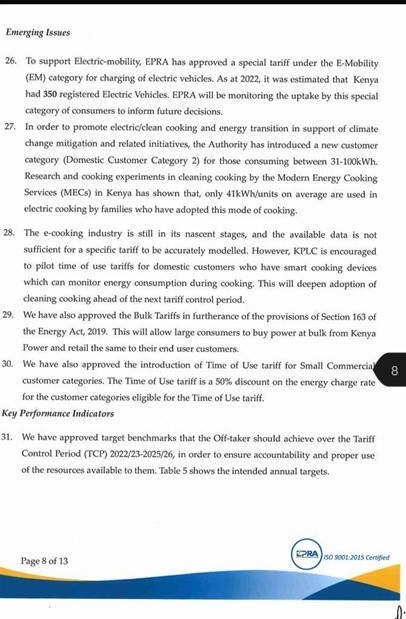
This tariff review process highlighted new opportunities for collaboration with the CoP members, many of whom attended the dialogue and/or sent comments on the draft proposition by email. Stakeholders collaboratively brainstormed different options for more favourable tariff regimes that could support the growth of the sector. Snippets of the discussion on the tariff review process in the eCooking Community of Practice can be seen below.
The tariff review process also opened the door to a longer-term collaboration with EPRA & KPLC to develop a stronger evidence base on which to design a dedicated eCooking tariff during the next tariff review cycle in 3 years:
“The eCooking industry is still in its nascent stages and the available data is not sufficient for a specific tariff to be accurately modelled. However, KPLC is encouraged to pilot time-of-use tariffs for domestic customers who have smart cooking devices that can monitor energy consumption during cooking. This will deepen adoption of clean cooking ahead of the next tariff control period.”
Whilst these collaborative efforts led to the implementation of a new tariff band, electricity prices have still risen for all consumers by 30-50%. Consequently, Nuvoni’s meta-analysis of the cost of cooking all your food with electricity from the draft National eCooking Strategy showed that it is now slightly more expensive than using gas.
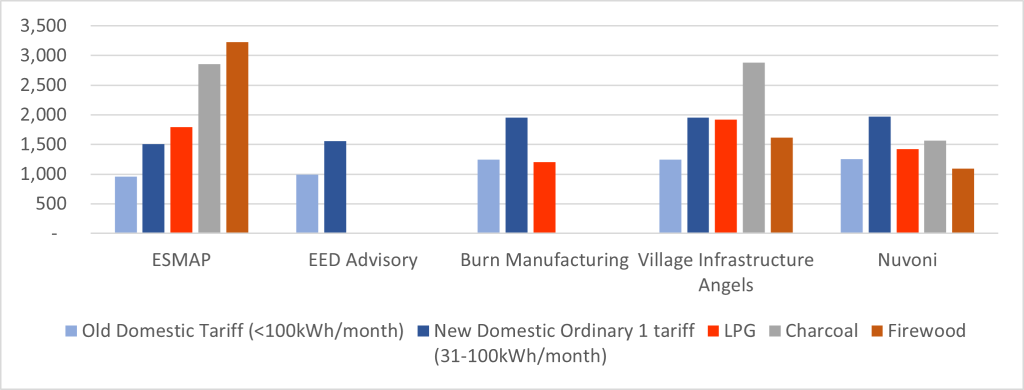
However, the cost competitiveness of eCooking is more nuanced than this, with both the appliance and the dish being cooked able to tip the balance between electricity and other cooking fuels, the prices of which are constantly shifting. Perros et al’s (2023) detailed analysis of data from a set of CCTs carried out with electric and non-electric cooking solutions illustrates these effects very clearly. The time-series plot shows that whilst last year, gas was expensive and electricity was cheap, the tax incentives in this year’s finance bill coupled with the rise in electricity tariffs reversed this situation. Nonetheless, whilst cooking with induction is now reportedly the most expensive option because the EPC makes such deep savings on the long boiling dishes, it is still the cheapest way to cook.
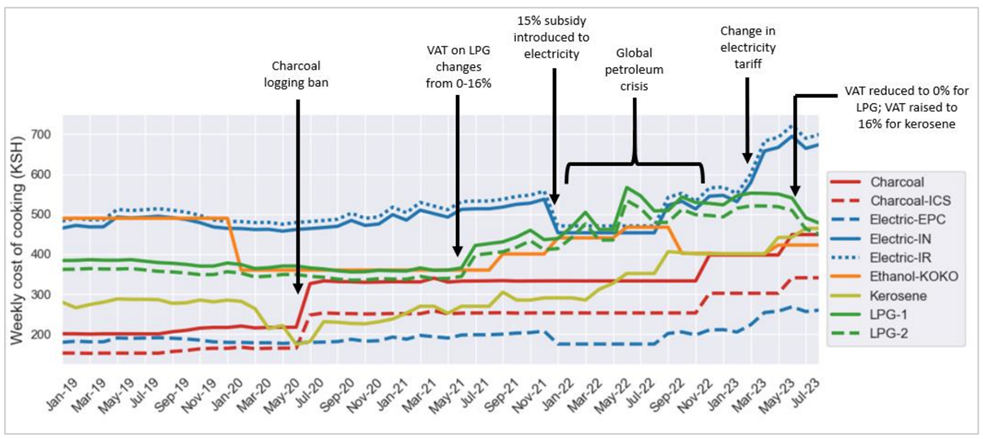
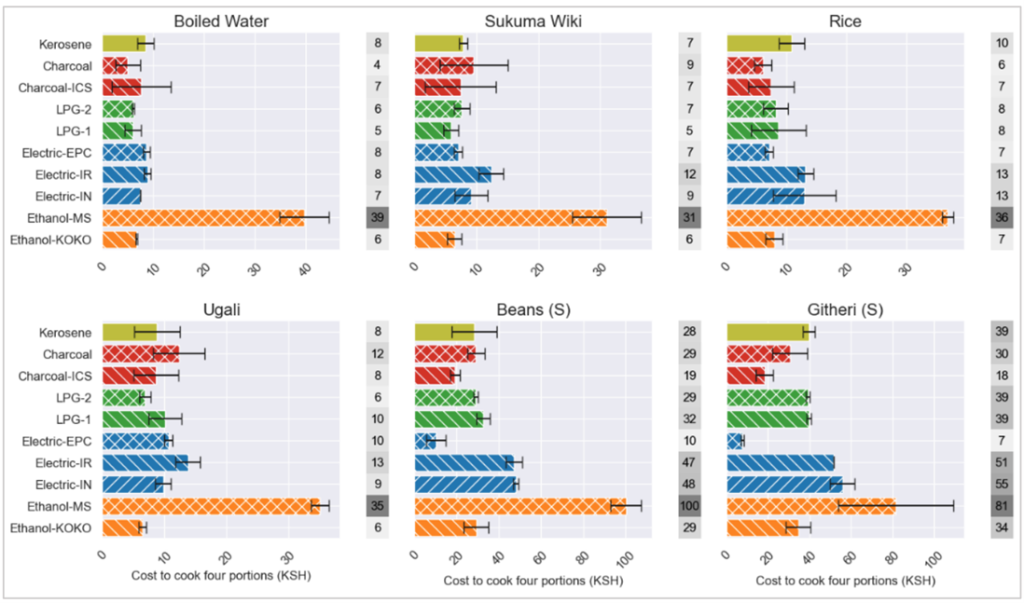
EPRA is currently conducting a series of public participation forums across the country to examine and review draft energy regulations, including the Draft Energy (Electricity Tariff) Regulations, 2022. During this meeting, Dr. John Mutua reiterated their commitment to developing the right tariff structure for both cooks and Kenya Power: “We are in the process of developing a tariff that will provide an incentive for people to cook… They may now be using kerosene or charcoal, but we want them to be using electricity… As we transition to 100% clean cooking by 2028, we need more solutions… We are ready to work with Kenya Power to start testing out what this could look like… We don’t have to wait until the next tariff control period in 2026 to do this.”
The new EnDev GeCA Results-based Financing (RBF) programme, which incentivizes smart-metered appliances, could offer the ideal platform to carry out such an experiment at scale. We look forward to collaborating with EPRA, KPLC, distributors of smart-metered appliances, and other key players in Kenya’s emerging eCooking community in the coming months to put this plan into action.
…………………………….
Featured image, top: Electricity Tariff Regulations Review Workshop. Source; Dr. Jon Leary (MECS).